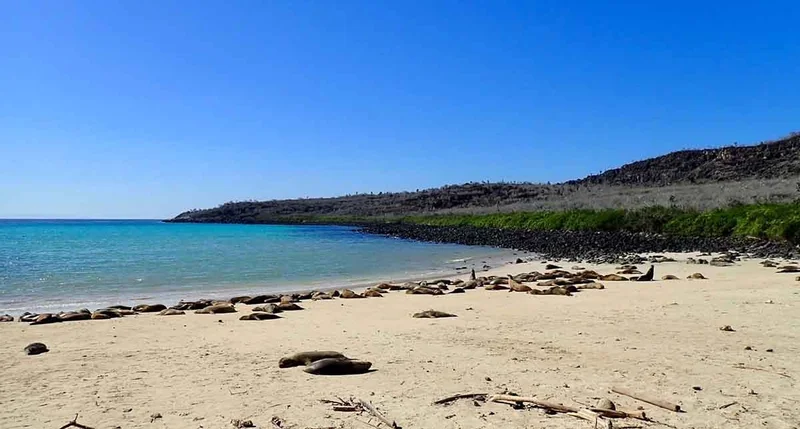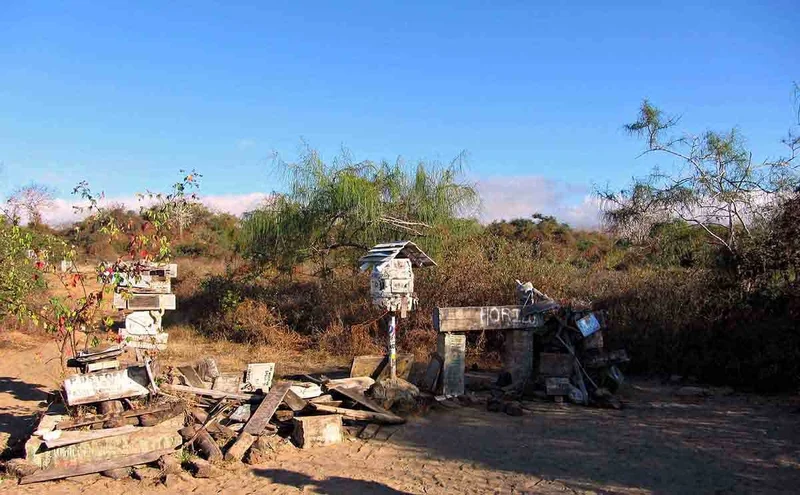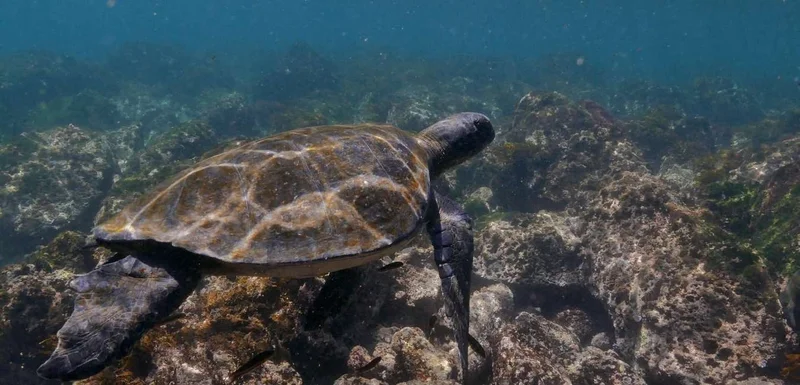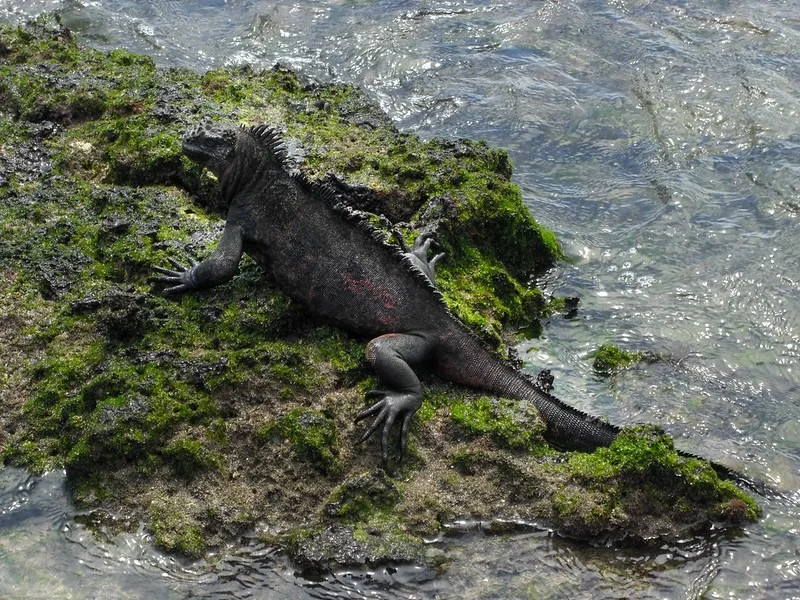

Experience the Galápagos Islands on this 8-day adventure. Highlights include snorkeling at Bartolome and Devil’s Crown, observing giant tortoises in Santa Cruz’s highlands, and encountering diverse wildlife like blue-footed boobies and sea lions at Española and Floreana Islands. Visit iconic landmarks like the Charles Darwin Station and Post Office Bay.
8 Day Galapagos Itinerary
Day 1: Baltra Airport & Santa Cruz Island & Bartolome Island
Bartolome Island
Considered as the most iconic landscape of the archipelago overlooking the famous Pinnacle Rock and the austere Santiago Island beyond, is well worth the ascent up the wooden boardwalk. This volcanic scene has often been compared to a lunar landscape. Our 60 minutes snorkel here might put us face to face with Galapagos penguins, curious sea lions and white-tipped sharks.
Day 2: South Plaza Island & North Seymour Island
South Plaza Island
Our tour involves Dry landing in the presence of Sea lions, swallow-tailed gulls and land iguanas. The small island is covered with a carpet of a red succulent studded with Opuntia cacti. At the cliff edge, we spend time watching birds fly past at eye level in the up draught, including frigate birds, flocks of Galapagos shearwaters and red-billed tropicbirds. Back at sea level, we once again encounter land iguanas, some of which have hybridized with their resident marine cousins.
North Seymour Island
Again, dry landing on this flat, uplifted island with rocky-terrain which is an important spot to see both magnificent & great frigate bird males courting the females by clicking, bill-clapping, shuddering and flapping their wings, all while showing off their grossly inflated, bright red, gular pouch. We will also likely see courting blue-footed boobies displaying their unique feet while dancing to a potential mate. Sea lions, swallow-tailed gulls, crashing surf and distant views of the Daphne Islands top off a great visit.
Day 3: San Cristobal Island: Pitt Point & Witch Hill
Pitt Point
Todays is wet landing on the beach; Sea lions will greet us there! Get ready for our climb to a high point on the steep eroded tuff cone. This is the only place in the islands where we will enjoy the chance to see the three booby species in the same place: red-footed will be perched on the Cordia lutea and small trees, Nazca Boobies will be on the ground near the cliff edge while the blue-footed Boobies will be a little further inland. Frigate-birds will be all around and the views are indeed spectacular.
Witch Hill
Wet landing at “Cerro Brujo” from our panga, as we head to shore, we are first humbled by the immensity of the stunning cliffs; enjoy sharing the beach with sea lions and snorkel from the sea-shore. You can also follow the sandy trail to the hidden lagoon where you might spot ruddy turnstones, whimbrels and black-necked stilts, white-cheeked pintails.
Day 4: San Cristobal Island: Cerro Colorado & Interpretation Center
Cerro Colorado
On our last cruise day we visit the moist highlands of San Cristobal towards “La Galapaguera” giant tortoise breeding center to witness the most iconic creature of the archipelago in its various life stages in a semi-natural habitat which lends itself to good photographic opportunities. The aim of the reserve is to help restore populations of the threatened San Cristobal tortoise back into the wild. In town, there are shops to purchase local handicrafts and souvenirs.
Interpretation Center
Dry landing at the Pier. The Interpretation Center is full of interesting information and offers the perfect overview to the formation of Galapagos, its significance in the world, threats and conservation efforts. Afterwards, hike to Frigate-bird Hill (Cerro Tijeretas) were we will enjoy great views at both species of frigate-birds, with bonus of a beautiful sceneries of the bay below us.
Day 5: Española Island: Gardner Bay, Osborn Islet & Suarez Point
Gardner Bay & Osborn Islet
Morning wet landing at one of the most stunning beaches in all of Galapagos: Gardner Bay; the long, white, sandy beach, lapped by turquoise waters is home to a colony of Galapagos sea lions, indifferent to the humans that walk amongst them. The Hood mockingbirds, endemic to this particular island, will be keen to inspect the visitors and satisfy their innate curiosity. Darwin’s finches may also join the throng including the isolated warbler finch. We can also snorkel here from the beach, in the shallow waters of the bay and swim with playful Sea-Lions to complement our morning’s great adventure.
Suarez Point
After Lunch on board, dry landing at one of the top-highlights of the trip, Punta Suarez, which seems to have everything: A slew of marine iguanas and sea lions greet us at the landing site from where our walk continues with close encounters of boobies, endemic lizards, gulls and even the Blow-hole. The oldest extant island in the archipelago is our only opportunity to commune with the endemic Waved-Albatross during their breeding season between April and December. With luck, we can watch their complex courtship display.
Day 6: Floreana Island: Post Office Bay, Cormorant’s Point & Devil’s Crown
Post Office Bay
Wet landing at Floreana Island; a very short walk from the beach leads us to the famous Post Office Barrel. Claimed to have been first setup in 1793 by Captain James Colnett it remains the oldest functioning “post office” in the Pacific side. The system was that whalers and fur sealers would leave addressed letters in the barrel to be picked up by homeward bound colleagues. In the spirit of maintaining tradition, visitors today are encouraged to send a letter or a post card to their loved ones back home on the middle of their cruise.
Cormorant’s Point & Devil’s Crown
Wet landing. On arriving, the observant visitor will notice that olivine, a volcanic crystal, has proffered a subtle green hue on the dark beach. Our walk takes us past island-endemic Scalesia plants to a large, shallow, lagoon often inhabited by a variable number of shockingly pink greater flamingoes. Continue through a forest of “palo santo” trees to arrive at a powdery white-beach, a nesting area of green turtles. As we paddle barefoot in the shallow water we will spot diamond stingrays and white-tipped reef sharks. This coral-sand beach marks the end of our trail, and we head back to the olivine beach we landed on, to swim or snorkel amongst Sea turtles, Reef fish, Sea-lions and with luck, see white-tipped reef sharks. A small colony of penguins can sometimes be observed as well.
Continue towards one of the favorite snorkeling sites in the islands: Devil’s Crown, an eroded volcanic cone, home to an abundance of fish and marine animals. Here we’ll swim with large schools of yellow-tailed surgeonfish and creole fish; with some luck, we may spot Sea turtles, spotted eagle-rays, parrotfish, and even hammerhead sharks! The jagged “ecrowni” is a roosting area for boobies, noddies, tropicbirds, and frigates.
Then we will head to Champion Islet also happens to be the last remaining home of the island-endemic Floreana mockingbird which we may be lucky enough to see from our pangas.
Day 7: Santa Cruz Island: Charles Darwin Station & Highlands
Charles Darwin
Dry landing in Puerto Ayora at Santa Cruz Island to visit the World-Known Charles Darwin Station, once home to the famous Lonesome George, the last Tortoise of the Pinta race, the breeding and relocation center is named in honor of his long-time guardian. The center is set in the Galapagos National Park Service where various interpretative buildings are available to visit. The grounds, with large stands of native vegetation, are one of the better places to spot some of the seldom seen Darwin’s finches such as the woodpecker, cactus and vegetarian finches.
Highlands
In the central highlands of Santa Cruz Island we have our best opportunity to interact at close quarters with totally wild, Galapagos giant tortoises. A short walk among these huge, 600lb, reptiles will also offer the chance for more highland species, especially several species of the famed finches.
Day 8: Santa Cruz Island: Ballena Bay & Eden Islet
Wet landing. The perfect spot to enjoy our water activities of snorkeling, kayaking or the glass-bottom boat. Expect to see lots of fish species including king angelfish, surgeonfish, parrotfish, damsels, rays and sharks. From the land portion of the visit there will be sea lions and basking marine iguanas with herons and turtles in the mangrove areas. We might even discover some antique ceramic relics left behind by previous settlements.
After our morning visit, transfer to the airport for flight back to Mainland.
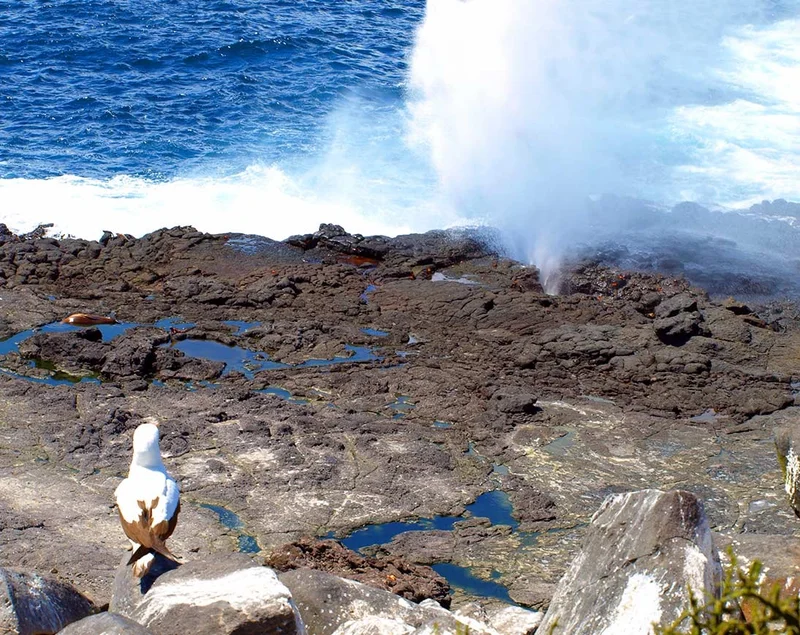

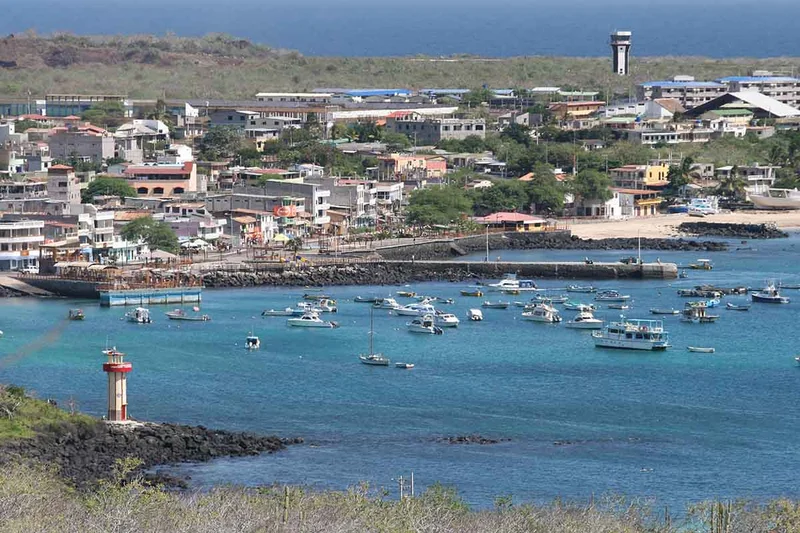


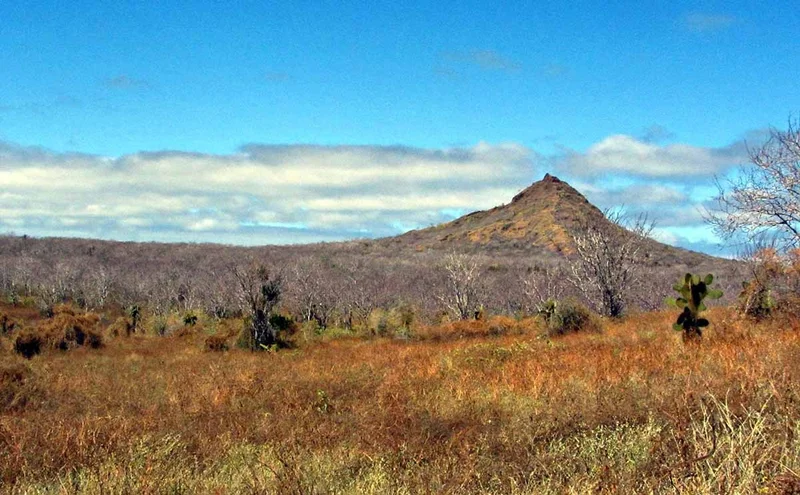

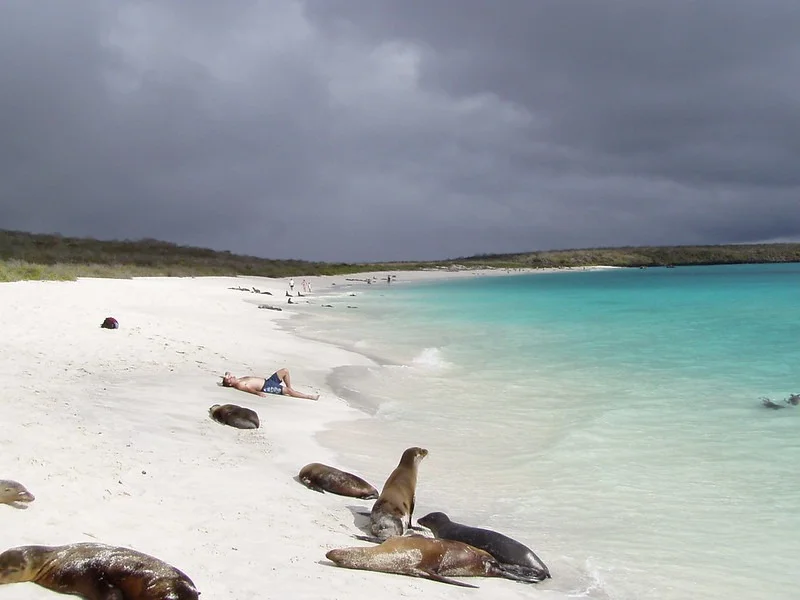
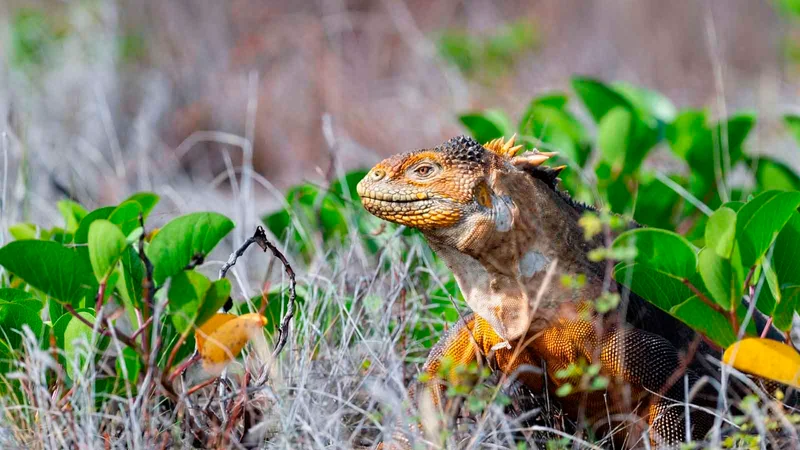

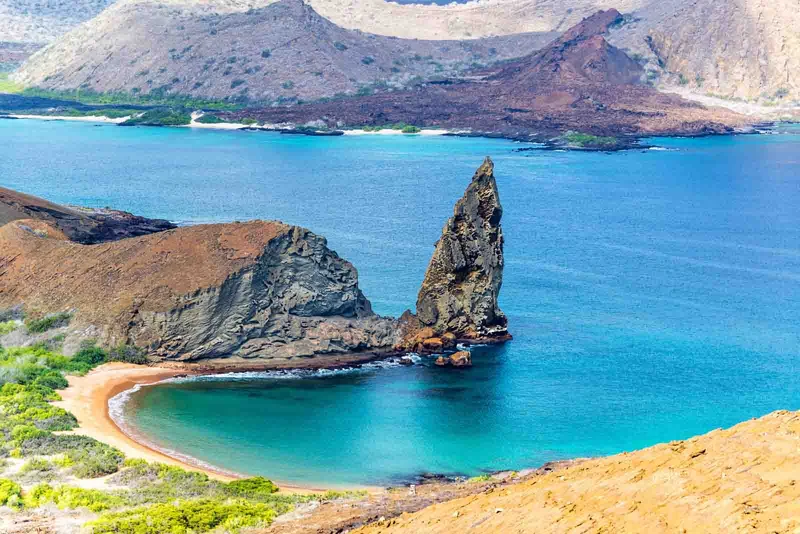

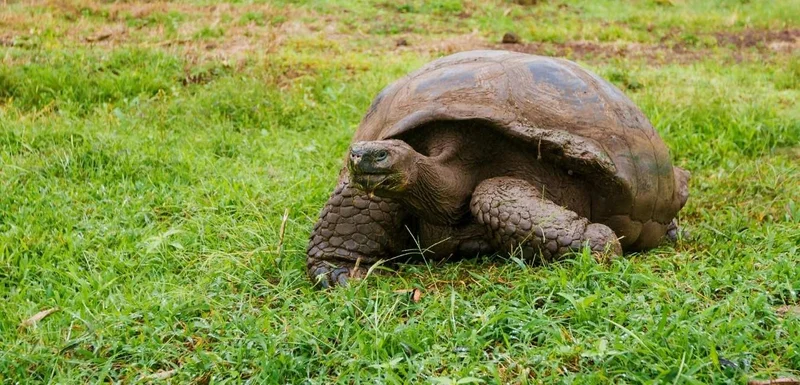


8 Day Galapagos Itinerary Includes
- All programed visits as per itinerary with specialized naturalist bilingual guide
- Accommodation in twin/double cabin with private facilities
- Cruise Fuel Surcharge
- All meals on board, drinking purified water, coffee and tea
- Snorkeling equipment (fins, mask & snorkel) & sea-kayaks
- Transfers within the islands on cruise dates as per itinerary
- Personalized 24/7 assistance during tour.
8 Day Galapagos Itinerary Does not Include
- Airfare to/from Galapagos from/to Mainland Ecuador (to be added)
- Galapagos National Park Entrance Fee US $200 per person (in cash only upon arrival)
- Galapagos Migration Card US$20 in cash per person (at Mainland’s Airport)
- Alcoholic/soft drinks, personal expenses, extras, and tips
- All sized Wet-suits for rent on board
- Travel, medical & cancelation Insurance and any services on Mainland
- Other services not specified in the program.
8 Day Galapagos Itinerary Highlights
- Enjoy the breathtaking scenery from Pinnacle Rock.
- Follow a life-filled 2-hours trail at South Plaza surrounded by Opuntia Cacti to encounter Land iguanas.
- See the three species of Boobies: Nazca, Red & Blue-footed at Pitt Point.
- See and learn how Giant Tortoises are being protected in semi-natural state at San Cristobal’s Highlands.
- Enjoy Gardner Bay, one of the most beautiful white-sand beaches in America.
- Discover the Marine Wildlife at one of the best snorkeling sites in the Archipelago, Devil’s Crown.
- Enjoy the luxury amenities and special details on board your exclusive Vessel.
Itinerary Map

Reviews
Animals you might see on this itinerary:
More information about the Galapagos Islands you visit in this 8 day itinerary:
Deluxe Central & Southern Galapagos Islands Vessel Cruise Journey - Galapagos Legend Expedition Ship
Why travel with us?
Similar Itineraries
